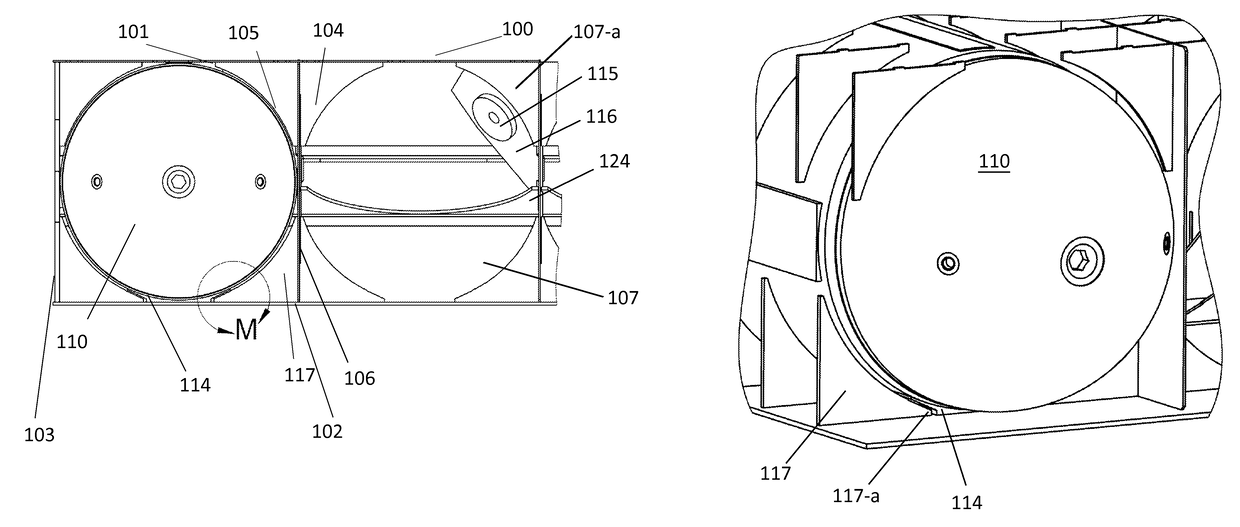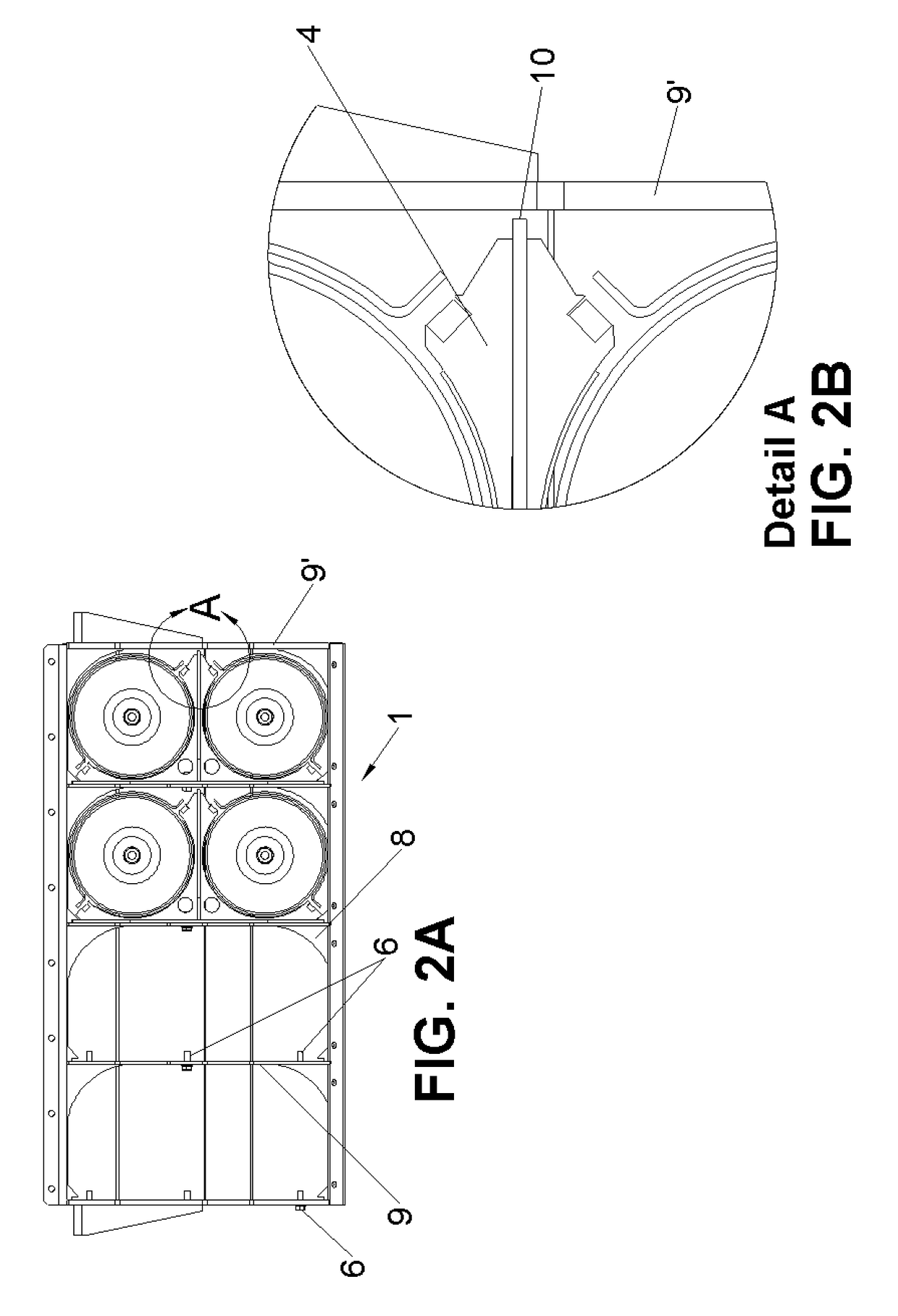The storage tanks and support equipment used in existing systems are repurposed from other industries in commercially available sizes and configurations that are less than ideal for high
horsepower, mobile applications.
As a result, existing systems for locomotives, both CNG and LNG, have been limited to specific local application and
pilot or research projects that do not necessarily require large storage capacity, ease of service,
maintainability or adherence to regulations such as
crash worthiness necessary for general use on freight and passenger lines.
In off road mobile applications, the most significant technical challenge is attaining the necessary DGE capacity to motivate manufacturers and end users to convert from
diesel fuel.
For tenders and flat cars, it is possible to attain acceptable storage capacity, but results in additional rail cars to the
train consist and / or added weight and complexity for the operators to deal with.
For underframe storage, these existing components and packaging schemes limit the storage density, thus limiting the range, performance and functionality of the vehicle the
system is supporting.
Underframe or belly mounted tanks in place of or in addition to the existing fuel tanks on the locomotive present greater challenges in
package and storage capacity as well as introducing additional requirements for
crash worthiness criteria and other safety regulations.
This approach makes mounting and servicing the tanks less than ideal as it requires removing the
enclosure with all the tanks at once as one
assembly.
Another downside of this type of longitudinal tank arrangement is its lack of storage density when the longitudinal space to put the tanks in is less than 9 feet as it is with typical switcher locomotives.
This results in a higher quantity of shorter tanks, reducing the storage capacity and increasing the cost as well as the number of components and potential leak points.
For both tender car and underframe NG storage, maximizing capacity requires close spacing of the NG cylinders making mounting the tanks in tender cars or under frame enclosures a challenge.
The switcher has
metal on
metal wheels and will see significantly more
vertical vibration, this will affect the loose fit in the sliding pin block causing degradation of the pin material where it meets the block, as the locomotive CNG tank is longer and heavier it could also cause fatigue in the aluminum neck boss material and a tank failure at the tank neck.
The most significant detriment to the neck mounting
system is the operation of the switcher locomotive, its primary purpose is to frequently couple and uncouple with rail cars, and these
coupling events lead to repeated impulse loads of several g's.
These repeated impulses could be a fatigue risk to conventional neck mounted composite CNG cylinders if the loads are significant and perpendicular to the axis of the tank.
The issue with strap mounting of CNG cylinders is that access is needed to tighten the straps from the side and this will require spacing the tanks further apart thus reducing the total number of CNG cylinders and total fuel capacity.
This becomes a problem when an agency has several hundred busses with some of them idle.
Also as LNG is stored for a long period of time and is venting, its percentage of
methane will drop over time as
methane boils off first.
Using fuel that has weathered too long can result in engine damage.
Further this
system requires heat to be added to the tank to raise the pressure or off gassing or flaring of vaporized
natural gas if it is not consumed in time by the engine, both of which expend energy or release fuel which further reduced range and efficiency
This is especially a problem when refueling large pieces of offload equipment from LNG tanker trucks.
A further challenge in passive LNG tank systems is maintaining the required
tank pressure when the engine is at high loads and consuming a large amount of fuel over an
extended time.
When this small amount of fuel boils off, it absorbs a large amount of
latent heat and
chills the remaining liquid.
This was a particular problem with the LNG switchers at LA Junction RR, the locomotives could only operate at high power for a short time before low LNG
tank pressure forced the system to reduce
engine power output.
The material challenge to this is getting large seamless tubing extruded or formed at the necessary wall thick in lengths that is useful.
There is a great deal of progress being made in Type 3 cylinders that overcome these size limitations, but they rely on expensive composite materials and are not tolerant of high temperatures, the typical aluminum liners will eventually fatigue, and the seamless aluminum material needed for the liners is only available up to 24 inches.
There is a challenge in the basic construction of the Type 2 cylinders regarding the region at the ends of the cylinder where the liner transitions from the constant cross section cylinder to the end
dome shape.
If the wiring winding was to go past the point of tangency on the liner into the area of the dome, the tapering surface of the dome poses a problem with the wire wrapping.
As the dome surface tapers the wires can slide along the surface to relieve
internal stress and loading, and will therefore not fully perform the function of carrying the hoop stresses of the cylinder at that point.
This has several negative effects; it increases the weight and cost of the cylinder, and also reduces the CNG cylinders capacity for the same size OD liner or Type 2 cylinder assy.
 Login to View More
Login to View More 


